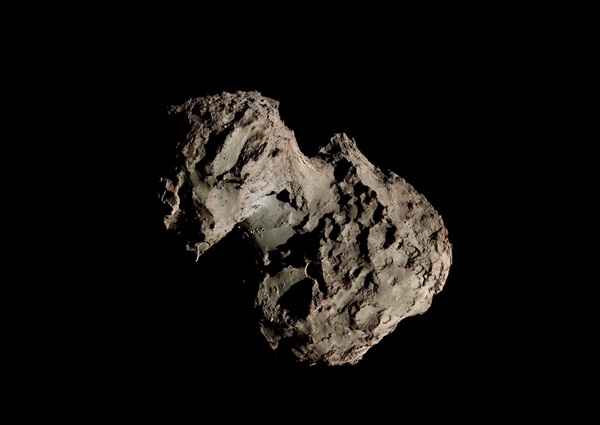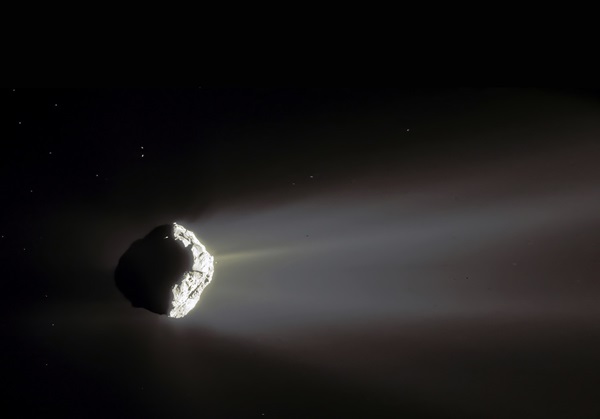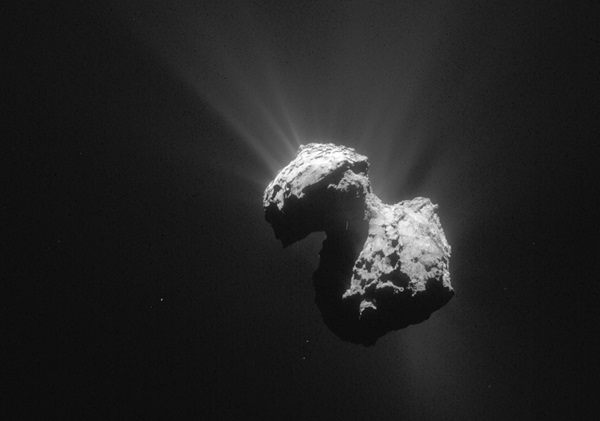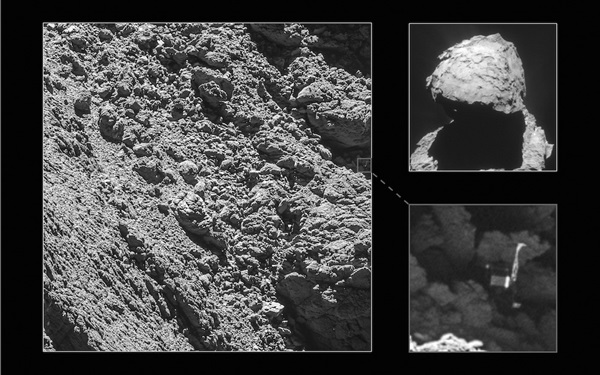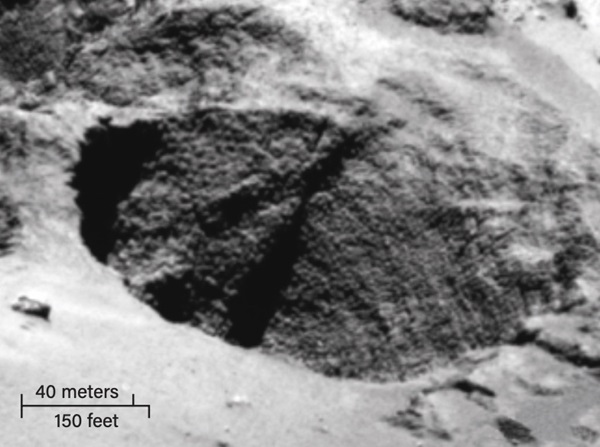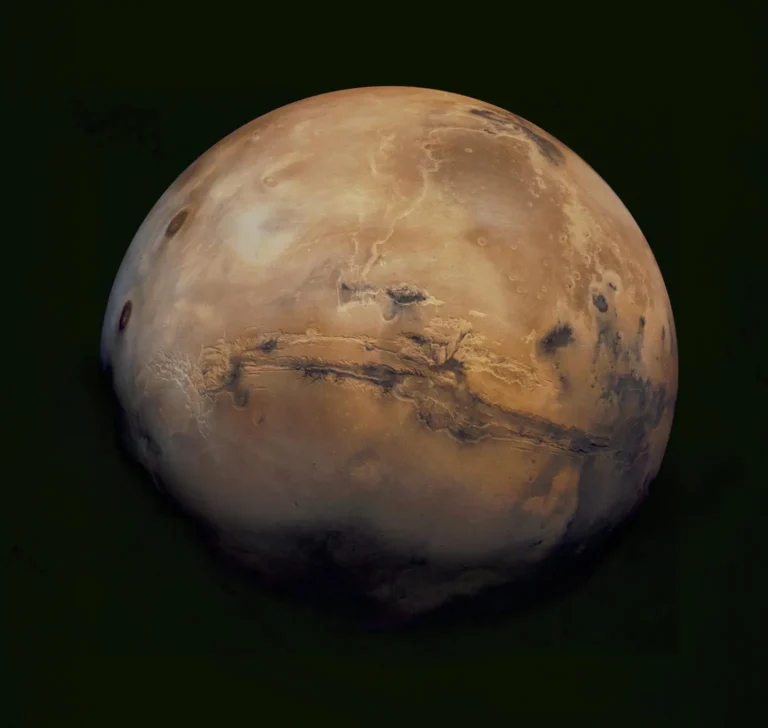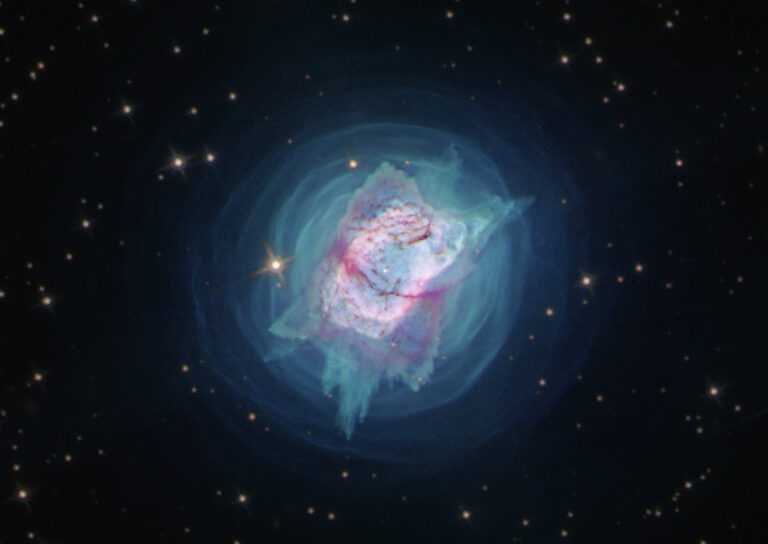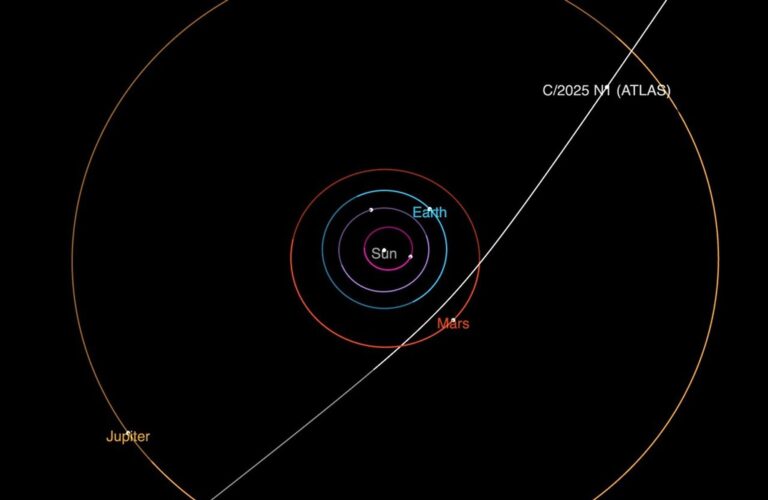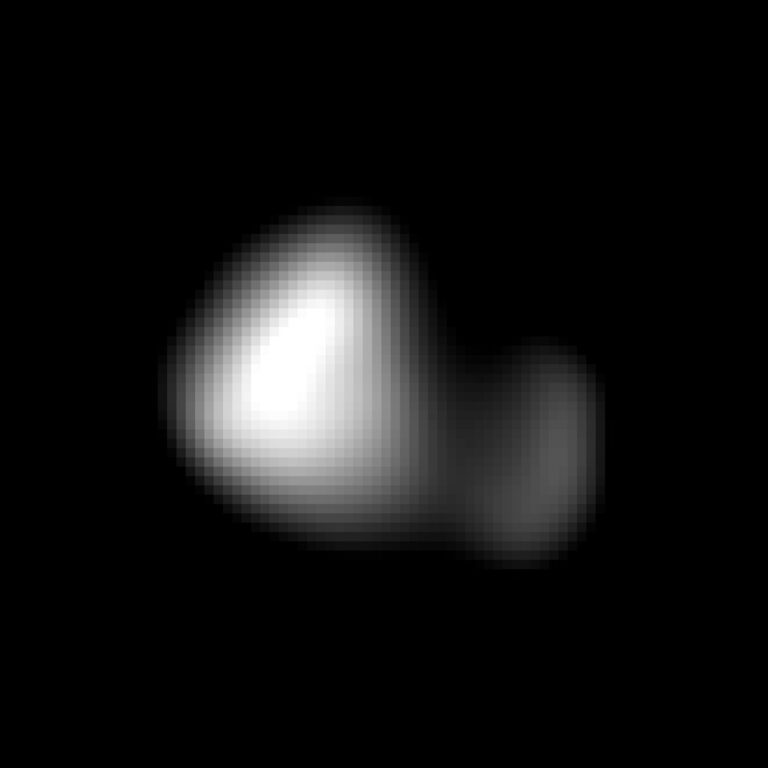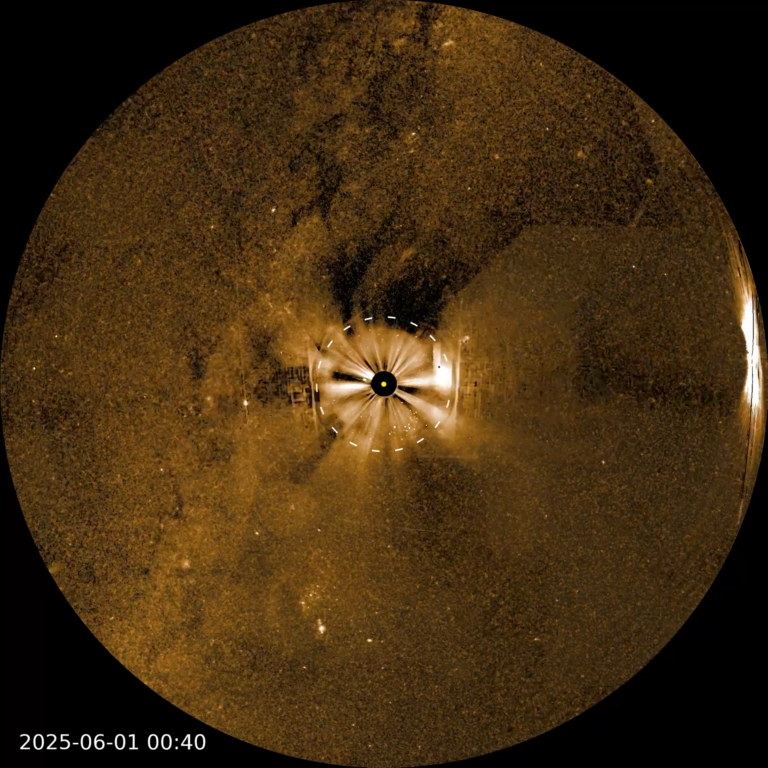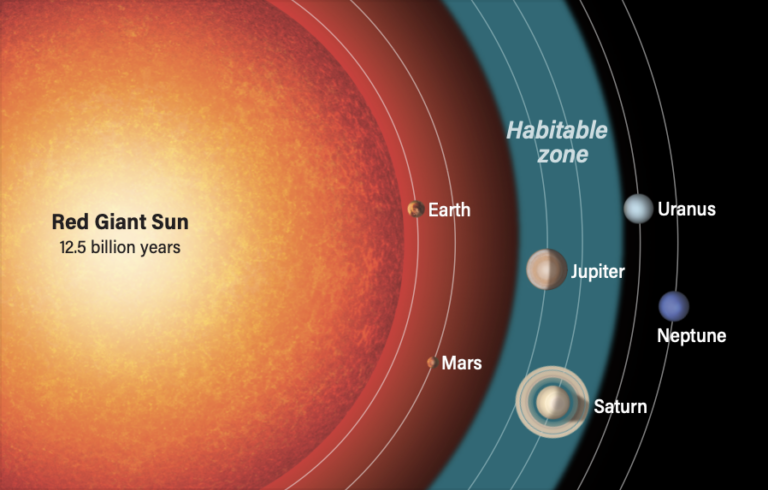Key Takeaways:
Last year, 2022, marked 30 years since the first discovery of a member of the Kuiper Belt beyond Pluto, 1992 QB1, by astronomers David Jewitt and Jane Luu. The presence of this small world, roughly 60 miles (100 kilometers) across, wasn’t entirely unexpected; the Irish astronomer Kenneth Edgeworth had suggested a population of such objects could exist beyond Neptune nearly 50 years earlier. Nevertheless, it was an impressive feat of perseverance and technical skill.
It also marked a turning point in the study of comets. The last three decades have brought a torrent of new discoveries that have transformed our understanding of where cometary bodies reside, how they got there, and how they continue to evolve.
The last 20 years have also been a golden age of comet exploration with spacecraft. Since Deep Space 1’s flyby of 19P/Borrelly in 2001, we have had close encounters with six cometary bodies. They include NASA’s Deep Impact mission, which struck the surface of Tempel 1 (9P/Tempel) with an 816-pound (370 kilograms) impactor; the European Space Agency’s (ESA) Rosetta spacecraft, which spent two years exploring 67P/Churyumov-Gerasimenko; and NASA’s New Horizons mission, which, after passing by Pluto in 2015, buzzed the KBO Arrokoth in 2019. These encounters have revealed icy planetesimals to be astonishingly complex worlds that vary in shape, geology, and activity, with no two objects fully alike.
These advances have been reinforced by tools that can identify more complex gases in comae — the fuzzy atmospheres that surround comets as gases vent and evaporate. And since 2011, the Atacama Large Millimeter/submillimeter Array in Chile has been imaging planet-forming disks around other stars, providing additional context to the histories of these small icy bodies.
It may seem that with all we’ve learned since the discovery of QB1, the most important questions about comets have been answered. And yet, many of the key properties of comets remain a mystery. As primordial leftovers from the formation of our planetary system, they also happen to be the best available avenue for exploring its origins. With that in mind, here are just a few of the questions that have yet to be answered.
Thanks to an expanding network of progressively more powerful surveys and telescopes, we now have identified several thousand Kuiper Belt objects (KBOs), along with hundreds of Centaurs — cometary bodies occupying unstable orbits that ricochet among the giant planets. When these objects are perturbed and sent sailing into the inner solar system, they are heated by the Sun and transformed into the ethereal apparitions we know as comets. Surveys now routinely discover incoming comets as they pass through the outer regions of the solar system and monitor how they evolve as they approach and then depart the inner solar system.
What are comets made of?
The first modern description of a comet nucleus was suggested by Fred Whipple in the 1950s. In his model, a comet was a more or less uniform body that he called an “icy conglomerate,” composed of various ices mixed with dust. The press dubbed it the “dirty snowball” hypothesis. While this could explain cometary activity, it did not fit our emerging understanding of comets as bodies nearly devoid of internal strength that occasionally disintegrate of their own accord when merely warmed by the Sun.
In 1986, Paul Weissman proposed that comets were instead “rubble piles” of loosely bound, smaller bodies of various sizes. These pieces of rubble would have had to collide at very low velocities and been in largely similar orbits to avoid destroying each other.
Modern models for comet formation are based on one of two ideas. The first is that, when the Sun was still forming, instabilities developed in the surrounding disk of material. These instabilities could have been caused by a variety of processes, but the end result is pockets of high density where collections of smaller objects become gravitationally attracted to each other and coalesce.
The second is radial drift, which occurs as forming particles grow to meters in diameter. At this point, drag causes them to slowly drift inward toward the Sun, attaching to other small bodies as they go.
Both of these mechanisms can form rubble-pile comet nuclei with the properties we observe, including low overall densities and constituent particles that have virtually no bond between them. However, the properties of the components depend on assumptions about the conditions under which they formed. Some models predict a nucleus composed of a uniform mix of smaller particles of similar sizes, while others imply a mix of sizes ranging from 1 to hundreds of meters in diameter. Yet another model predicts that comet nuclei form when higher-velocity impactors accumulate, compressing one another to form a layered interior rather than a rubble pile.
Unfortunately, it is difficult to tell the difference between various formation models even when we visit a comet up close. However, we are occasionally provided with clues we try to interpret. In 1992, Comet Shoemaker-Levy 9 experienced a close encounter with Jupiter where tidal forces tore it apart into 21 smaller fragments, which famously impacted Jupiter two years later. But in between, we were able to watch the fragments spread out along the comet’s orbit. The sizes of the individual fragments varied considerably, with estimated diameters ranging from 330 feet (100 meters) to 2.5 miles (4 km). These sizes may have been evidence of the makeup of the original interior of the comet. However, it’s also possible they resulted from a different process related to the tidal disruption.
Subsequent missions to comets Hartley 2 (103P/Hartley) and 67P/Churyumov-Gerasimenko may have revealed evidence for a different formation process. The crowded halo of debris surrounding 103P contained objects as large as 1 foot (30 centimeters) in diameter; some researchers have suggested these are representative of the small pebbles from which the comet’s nucleus is assembled. Rosetta found a similar situation at Churyumov-Gerasimenko, where meter-sized “goosebump” features stacked along the walls of eroded pits on the surface appear to be examples of the primordial bricks making up the comet. Also at Churyumov-Gerasimenko, observers mapped what appeared to be a succession of layers on the surface that had been exposed as the comet evolved, leading some to suggest they were evidence for its formation via compressive impacts.
Ultimately, the only definitive way to understand a comet’s interior is to measure it directly. Short of burrowing in, our best method for doing so is to map the nucleus using radar. We actually came very close to doing this at Churyumov-Gerasimenko. The orbiting Rosetta spacecraft had a detachable lander, Philae, that was intended to serve as half of a bistatic radar mapping experiment. Unfortunately, that opportunity was dashed when Philae settled on the surface in a shadowed region where it could not recharge its batteries. Only a single measurement was made before the lander lost power.
Despite this, we haven’t given up. Scientists continue to develop new radar experiments that we hope to one day fly to another comet.
Why do comets have outbursts?
In 2007, Comet 17P/Holmes treated observers to an amazing display when it suddenly brightened by 14 magnitudes (a factor of nearly 500,000!) in 42 hours to become a naked-eye object that slowly faded over the next several months. This event was an extreme example of a cometary outburst, an explosion of activity releasing huge amounts of dust and gas from the nucleus.
Large outbursts like these occur seemingly at random: Some comets experience major events at several locations along their orbit, while others pass by the Sun in quiescence. This mercurial nature makes it very difficult to study outbursts. Of our spacecraft envoys, none has yet been present at the time of a large outburst, although Rosetta and Deep Impact both observed multiple small outbursts during their encounters with Churyumov-Gerasimenko and Tempel 1 (9P/Tempel), respectively. This suggests outbursts may be more common than we thought.
Their root causes, however, remain a mystery. Scientists have proposed various mechanisms, including large-scale geologic events like landslides, subsurface gas pockets exploding to the surface, and chemical reactions that rapidly unleash stored internal energy. It’s possible that all of these contribute to outburstlike phenomena in different situations, but the release of chemical energy may best explain very large events like the one from Holmes, those occurring farthest from the Sun, and outbursts where the energy of ejected material is substantially greater than what solar heating alone can provide.
The chemical process most frequently invoked is the transformation of water ice from an amorphous to crystalline state. Amorphous water ice condensed onto dust grains in the coldest parts of the early solar system, where temperatures were less than –387 degrees Fahrenheit (–233 degrees Celsius). At these temperatures, there isn’t enough energy for water to arrange itself into an organized crystal, so it assumes a disorganized form, inside which it is able to trap large quantities of gas. The amorphous state is stable in the frigid outer solar system beyond Neptune, but as a comet migrates toward the Sun, it begins to warm until its water can reorganize itself into the crystalline matrix of ice we’re familiar with.
When this occurs, two things happen. First, most of the gases trapped in the amorphous ice are released because the crystalline state has less room to contain them. Second, the transition to crystalline ice is an exothermic process, meaning it releases energy. The amount depends on the purity of the ice, but it can be enough to heat the amorphous ice and trigger a cascading wave of crystallization that produces an explosive release of gas and dust. Once the crystallization wave dies out, the remnant ice is stable, and normal comet activity can occur.
The best way to test hypotheses for large-scale outburst activity is to be physically present when the event occurs. Their random nature makes this challenging, but there are some targets where we are likely to be successful — like the Centaur 29P/Schwassman-Wachmann, which lies in a nearly circular orbit just beyond Jupiter and experiences major outbursts about seven times a year.
Philae (bottom right) was a small lander just over 3 feet (1 m) wide that accompanied Rosetta to 67P/Churyumov-Gerasimenko and touched down Nov. 12, 2014. Unfortunately, it was unable to recharge its batteries effectively and quickly fell out of regular contact. In the final month of Rosetta’s mission, the craft finally identified where Philae had come to rest: wedged deep in a crack where sunlight couldn’t reach it.
Short-period vs. long-period comets
A less obvious milestone in the study of comets came only three years after the discovery of 1992 QB1, when 51 Pegasi b became the first confirmed planet around another Sun-like star. We now know of nearly 4,000 stars with at least one planet, and several thousand additional candidate systems have ongoing follow-up studies.
These systems display tremendous diversity, with many planets occupying strange orbits that were difficult to reconcile with the conventional wisdom of the early 1990s for how our solar system formed. 51 Peg b was the first example of what we now call hot Jupiters — planets the mass of Jupiter or greater that hug their stars in orbits tighter than Mercury’s. Hot Jupiters showed us that planets can form in one place in their system but, over time, migrate to a completely different region.
The significance of migration to comets was first discussed a decade earlier by Julio Fernández and Wing-Huen Ip in a 1984 paper in the journal Icarus. They suggested that when comets are perturbed by the outer planets and scattered across the solar system, the resulting transfer of angular momentum would cause the giant planets to shift in their orbits.
In 1993, Renu Malhotra brought this model to the forefront by demonstrating that outward migration of Neptune had likely perturbed Pluto into its current orbital resonance with the ice giant. Her later work would correctly predict that Neptune was the key to the entire organization of the Kuiper Belt. Its motion and gravitational influence formed a scattered disk of small bodies that were forced outward by migration and clustered KBOs in orbital resonances.
The dynamical class of a comet refers to the reservoir from which it was perturbed into the inner solar system. The two major groups are the short-period comets (SPCs), with orbital periods up to about 200 years, and the long-period comets (LPCs), with periods from a few hundred to several tens of thousands of years. The SPCs come from the Kuiper Belt, specifically the scattered population driven there by Neptune’s migration. The LPCs come from the outer regions of the Oort Cloud, a uniform distribution of small bodies that stretches from a few thousand times the distance between the Sun and Earth out to more than a light-year away. Both of these reservoirs are thought to have been scattered to their modern orbits by the giant planets.
This is what makes comets so helpful in understanding the history of our solar system: The characteristics of a comet depend on the conditions within the primordial planetary disk where it formed, as well as how they were scattered to their modern location. When they return toward the Sun as comets, the physical properties of the dust and gas they release provide clues about the turbulent early history of the solar system.
For instance, the discovery of main-belt comets — a dynamical class of nearly dormant ice-rich bodies that reside in the asteroid belt — suggested that Jupiter forced icy bodies into the inner solar system. This also suggested the opposite process as well: that Jupiter scattered asteroids out into the Oort Cloud. In fact, some models predict that as much as a few percent of the Oort Cloud may originally have been asteroids. This was lent credence in 2016 when a team led by Karen Meech of the University of Hawaii reported that C/2014 S3 (PanSTARRS) was an inactive object with the orbit of an LPC but the composition of an asteroid.
Keep an eye on comets in 2023 and beyond
The coming years should be full of cometary advances.
The pace of discovery of KBOs shows no signs of slowing, and the 8.4-meter Vera C. Rubin Observatory in Chile, set to start operations in 2024, promises to uncover ever smaller and more remote objects.
Spacecraft will also continue to venture to comets. NASA’s Lucy mission, launched in 2021, is en route to the Trojan asteroids, which orbit in the vicinity of Jupiter and are thought to be captured KBOs. In 2022, the planetary science community recommended NASA prioritize a Centaur-lander mission, and concepts to visit 29P/Schwassman-Wachmann have been proposed. And ESA is developing the Comet Interceptor mission, which will launch toward the end of this decade and wait for a pristine long-period comet — perhaps even an interstellar visitor like ‘Oumuamua or Borisov — to appear.
As these initiatives unfold, there are sure to be surprises. One of the truisms of solar-system exploration is that close-up looks at our neighbors raise as many questions as they answer, often upending our conventional wisdom. This has certainly been true of comets — and will likely be true yet again.

